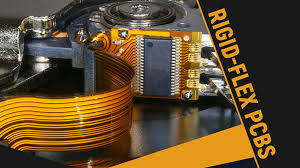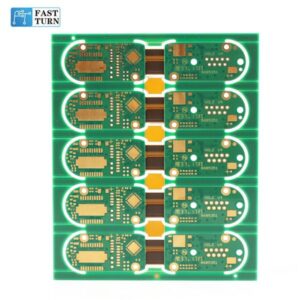Rigid-Flex PCBs are circuit boards that combine flexible and rigid PCB technology in an application. Most rigid-flexible boards consist of multiple layers of flexible circuit substrates that are attached to one or more rigid boards from the outside and/or inside, depending on the design of the application. Flexible substrates are designed to be in a constant state of flex and are typically formed into a flex curve during fabrication or installation.

Rigid-Flex designs are more challenging than typical rigid plate environments because these plates are designed in 3D space, which also provides greater spatial efficiency. By being able to design in three dimensions, the rigid-flex designer can twist, fold and roll the flexible board substrate to achieve the shape required for the final application package.
Frigid and flexible PCB manufacturing applications
Rigid-Flex PCBs offer a wide range of applications from smart devices to cell phones and digital cameras. Rigid-flex PCB manufacturing has been increasingly used in medical devices such as pacemakers to reduce their space and weight. The use of rigid-flex PCBs offers the same advantages for smart control systems.
In consumer products, PCB rigid-flex boards not only maximize space usage and minimize weight, but also greatly increase reliability, thereby eliminating much of the need for soldered joints and fragile and delicate wiring that is prone to connection problems. These are just a few examples, but rigid-flexible PCBs can benefit virtually any advanced electrical application, including test equipment, tools, and automobiles.














